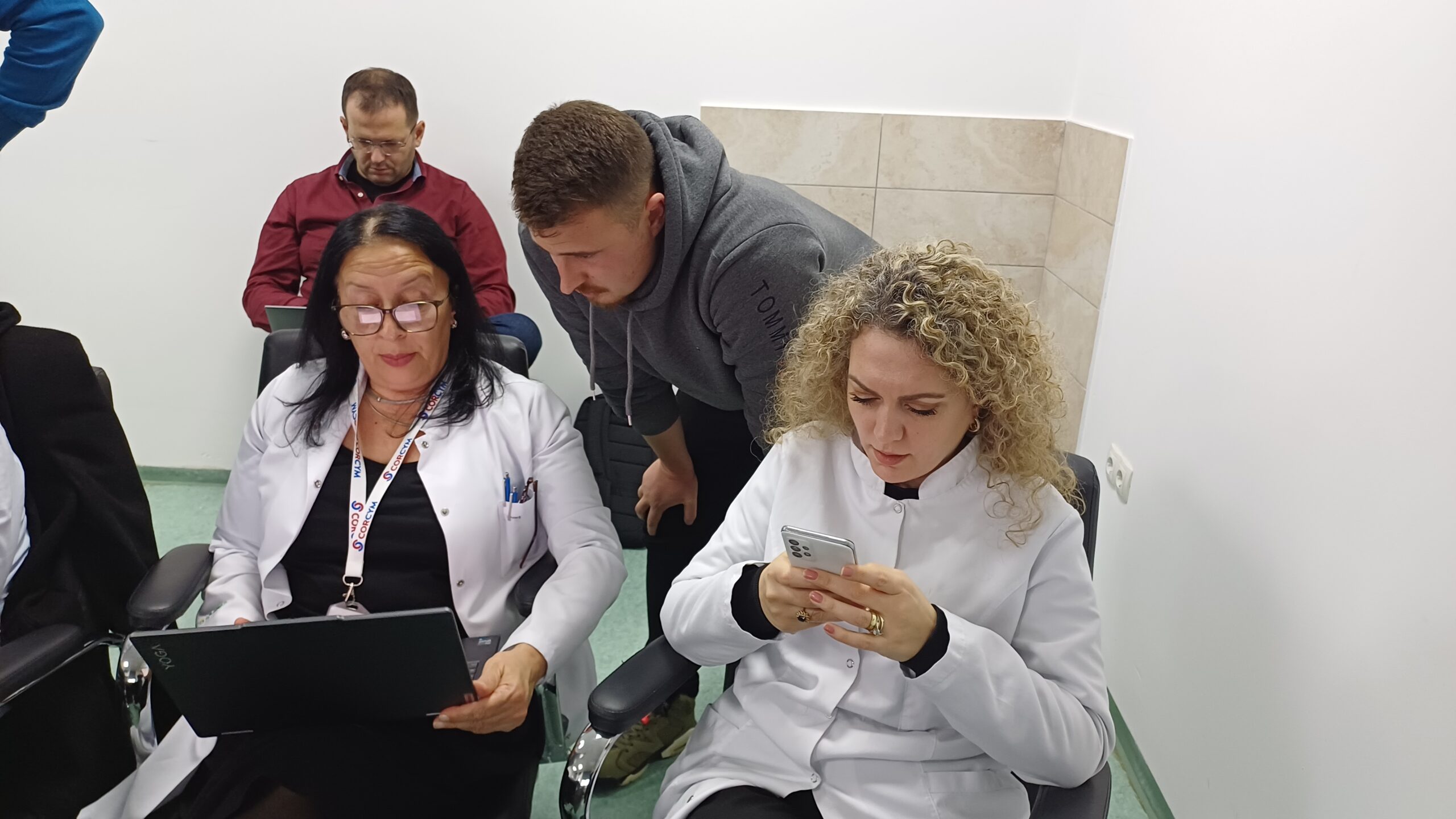Advancing Clinical and Patient Pathways for Better NCD Care in Kosovo

In Kosovo, a diabetic patient’s journey in the health system begins with the family doctor. Under the family medicine model, which Kosovo has officially adopted, primary care level doctors are responsible for coordinating a patient’s overall condition and treatment and referring them to specialist care when necessary. The family medicine model is intended to guide the patients and for healthcare providers to have a comprehensive view of patients’ medical history and ongoing needs.
In practice, though, the system sometimes gets fragmented. Services exist, but coordination between them is still developing. Many patients bypass family medicine centres as the first point of contact in search of specialist care, navigating the system on their own, which at times leads to missed opportunities for continuity of care, and long-term disease management.
Thus, building a coherent patient pathway, especially for those living with chronic diseases like diabetes, where the system guides the patient and not the other way around, is essential to improving outcomes and reducing complications. Only clear and streamlined guidelines ensure patients consistently receive the right care at the right time, making their journey through available health care facilities safe.

A significant shift is now taking place. To ensure that all chronically ill patients receive standardized high-quality care across all levels, Kosovo is introducing and embracing new Clinical Practice Guidelines (CPGs) to provide standardized and consistent care across all three levels of public healthcare.
Led by the Ministry of Health of Kosovo with the National Institute of Public Health (NIPH), and the Kosovo Hospital and University Clinical Services (SHSKUK) with the active support of the Integrated Health Services (IHS) and Accessible Quality Healthcare (AQH), this work is transforming NCD management in Kosovo through strengthening CPGs. The goal is not just to develop modern guidelines but to ensure they are effectively applied in everyday clinical practice. The way to achieve this is through enhanced collaboration, training, and innovative solutions, including measuring progress.
A key moment in this venture was a roundtable held in October 2024, when a group of healthcare professionals gathered to discuss the newly adopted Clinical Practice Guidelines and Protocols for diabetes care. The session was an opportunity for doctors and nurses, and other health actors – policy makers, public health experts and health managers, to align their practices with international standards and commit to a unified approach in treating the disease.

Dr. Merita Emini Sadiku, the head of the working group that developed the guidelines for diabetes care, described the process as a collaborative effort aimed at improving long-term health outcomes for people who suffer. “Our goal has been to align our practices with international standards, equipping healthcare providers in Kosovo with the tools to deliver the most effective care. This is a significant step toward improving long-term health outcomes for those with diabetes,” she said.
Several other CPGs are being developed, focusing on major often chronic conditions affecting the Kosovo population, like hypertension and cardiovascular diseases. One of the most significant steps in institutionalizing these guiding documents was the signing of a Memorandum of Understanding (MoU) between SHSKUK and IHS.
Elvir Azizi, Director of SHSKUK, highlighted “Our partnership aims at improving the quality of healthcare in our country, and is aligned with a shared vision and common goals. Through this MOU we have taken concrete steps toward developing clinical practice guidelines for non-communicable diseases, which pose a significant challenge to our healthcare system and the well-being of our citizens. They are essential for standardizing medical care, improving patient treatment, and strengthening the capacities of our healthcare professionals.”

Adopting these guidelines is only part of the solution. Implementing them effectively in public health care facilities remains a challenge. To bridge the gap between policy and practice, IHS and AQH introduced innovative discussion formats with medical professionals beyond traditional training or sessions, – for example, by emphasizing the role of internal audits and quality coordinators, whose job is to monitor compliance and identify areas for improvement. Further rollout of Training of Trainers (ToT) programs ensure that medical professionals receive continuous education and remain equipped with best practices in NCD management. Development of a new digital tool that helps patients to self-manage and track their condition to adhere to treatment plans as prescribed via the MoH patient diaries presents the innovation to expand nationwide in the future.
As Kosovo advances its fight for reducing the burden of NCDs, the success of these guidelines will depend on continued commitment of policymakers, healthcare professionals, and patients alike. The adoption and implementation of these guidelines aligns with Kosovo’s broader Health Sector Strategy and the upcoming renewal of the general Action Plan on NCDs (currently 2023-2025). With continued collaboration and commitment, Kosovo has the opportunity to set a new standard in NCD care, one that prioritizes every patient’s right to safe, consistent, quality treatment, leading to measurable improvements in patient health and well-being.
The next step on this journey is to provide support to national institutions to design and implement patient pathways as structured processes that guide individuals through each stage of care, from prevention to treatment and follow-up. Building a patient-centred pathway will ensure that this progress translates into alignment between guidelines, institutions, and the patient experience, and this will define the future of NCD care in Kosovo.